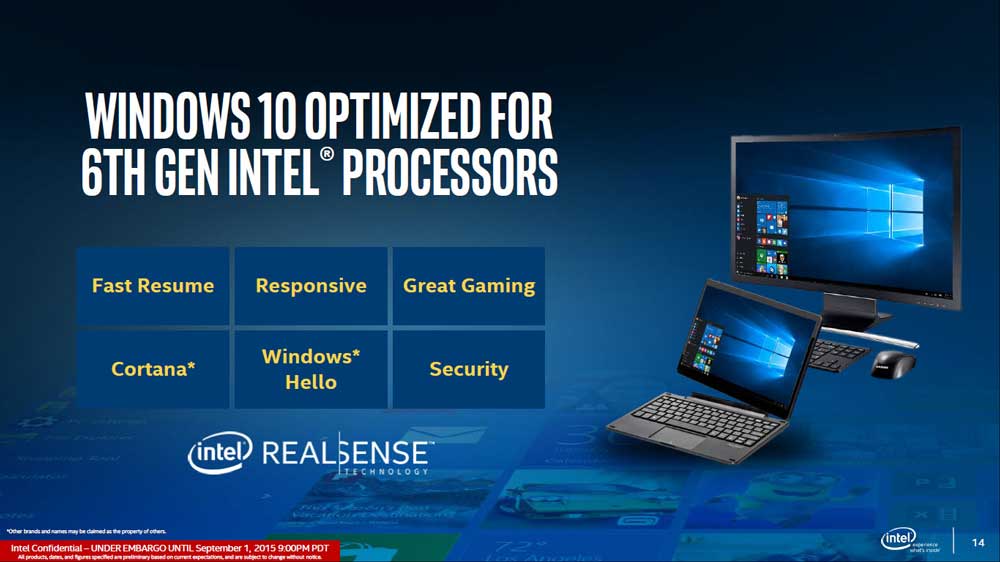Microsoft will end support for Windows 7 and 8, on Skylake powered PCs. Here is why it's a good thing.
The news that Microsoft will end support for Windows 7 and Windows 8 may have left some in shock and awe, but not without a sense of irony, as the fundamental truth about this news is that Microsoft has finally learned a valuable lesson from its main competitor: innovation doesn’t happen in small increments, nor in incremental percentages. By this token, Microsoft cannot evolve and move on from its past, without the complete overhaul of a business model that is as old as the Redmond software giant itself.

The early inceptions of Microsoft Windows were a pioneering effort to a simplified approach to computing for users. That approach has worked well for over three decades, until cloud computing and mobile computing have thrust consumers into a world where devices require only a minimal understanding of simple graphical interface elements, to carry on most common operations.
In the last 10 years, email, web browsing, management of photo galleries, social media sharing, for most consumers, represent the daily bulk of what occurs on a mobile device, like a tablet or a smartphone.
Laptops, hybrid tablets and desktop PCs have a slightly busier schedule, requiring apps like Microsoft Office, Adobe Photoshop, as well as connectivity to peripherals like printers and scanners.
Some of the reasons why most consumers feel threatened by the idea of upgrading to a new version of an operating system include the fear that their peripherals won’t be supported, or that their favorite software will no longer work. This is also the concern of the corporate world, however, this is what legacy support exists. Windows 10 supports the same internal and external hardware, supported by Windows 7 and Windows 8.
Hardware is also the very reason for an operating system to evolve, as the same it true for Apple Mac OS X, iOS, Android, and every Linux distribution in existence. With Skylake, the sixth generation of Intel Core processors, many features are being introduced that would be useless on operating systems prior to Windows 10. For instance, security enhancements that allow to safeguard biometric authentication data for Windows Hello inside the CPU itself, instead of the local storage, something that greatly enhances the security of a system.
Other features are very much performance-based, for which legacy support for old operating systems would be not only expensive, but also ineffective, as older versions of Windows still retain other serious vulnerabilities that render new hardware-based security features integrated in Skylake processors, irrelevant. In simpler terms, it would be like a bank vault with a lock-and-key wooden door next to a 30-inch thick steel blast door.
Software evolves as well, and all applications go through their own update cycles, to keep up the pace with new operating systems, as they should.
With that said, you can still run older operating systems until mid-2017
Microsoft has posted an extensive list of over 100 model laptops that will still run older versions of Windows until 2017. These systems include Lenovo, Toshiba, NEC, HP and Dell laptops, all powered by 6th generation Skylake CPUs. Microsoft will drop support for all operating systems except for Windows 10, on July 2017, which is less than six months away from Windows 8’s end of mainstream support. Extended support for Windows 8 will end January 2023. Windows 7’s end of support will happen a lot sooner, as quickly as January 14th 2020.
Finally: Hardcore Windows 7 and Windows 8 users, still have a choice between Intel and AMD
For those worried about not being able to buy a laptop or a desktop PC that can’t run Windows 7 or Windows 8, post 2017, there is solace: AMD is still in the business of building CPUs, and Microsoft has issued no statement in regard to not supporting new generations of AMD processors. In fact, AMD has come up with its very own 6th generation of A-Series CPUs for laptops, which powers anything newer than Windows XP Pro. The same goes for desktop systems, powered by AMD FX, Athlon, and Sempron.